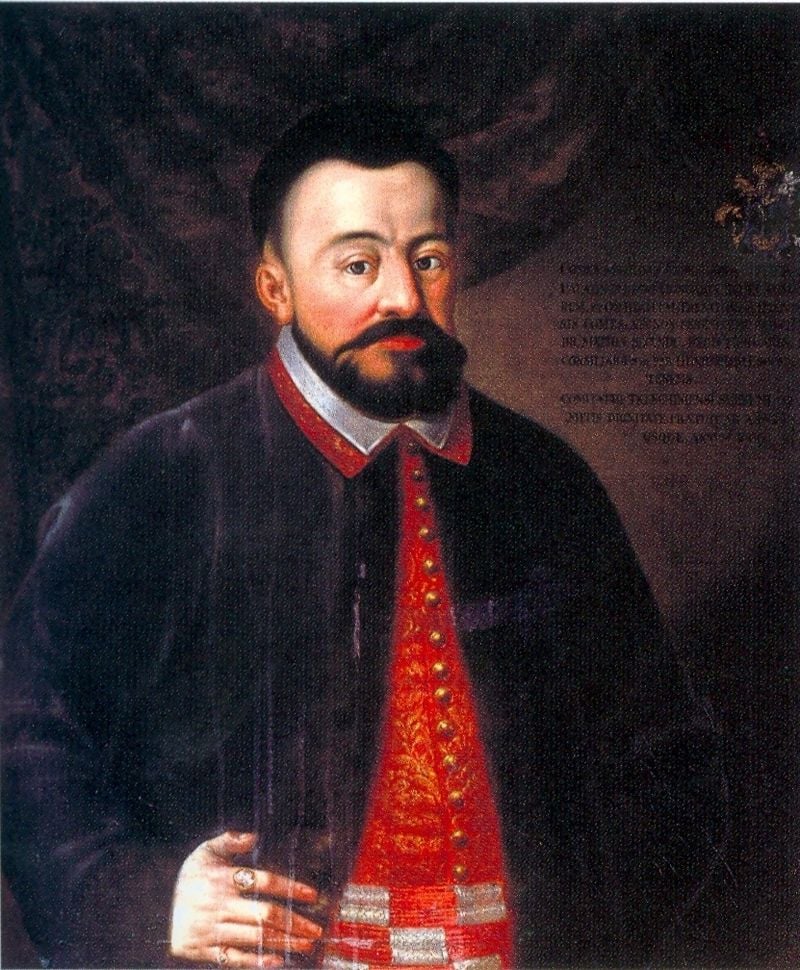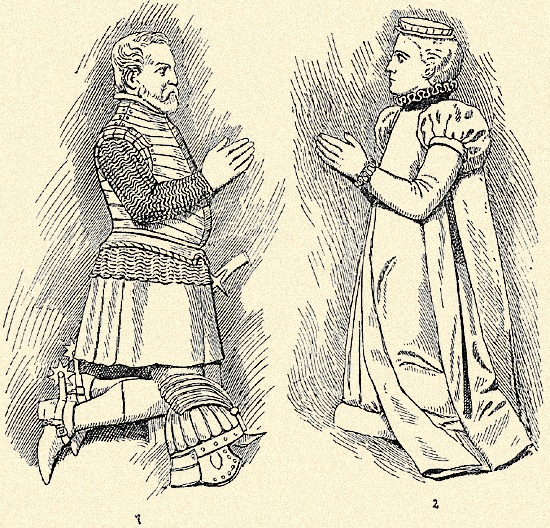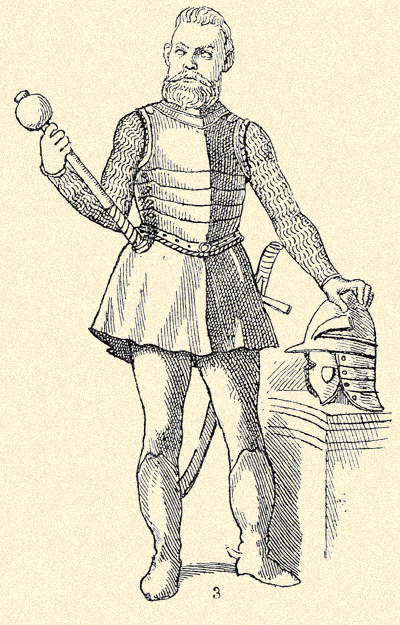
Illésházy István was born in March 1542 on the family estate in Illésháza. His parents were Illésházy Tamás, vice Comes of Pozsony County and Földes Zsófia. He came from an Evangelical noble family.

He completed his studies in Pozsony, then served in the army under Pálffy Miklós and later under Krusich János. In 1572 he married Erdődy Anna, the widow of Dersffy István of Szerdahely, with whom he had two sons. His second wife, whom he married in 1581, was Pálffy Katalin, the widow of Krusich János.

He had a great career in his life. Between 1567 and 1577 he was the captain of the hussars in Győr, but in 1573 he became the vice-comes of the county of Pozsony, and from 1577 he was a councilor of the Hungarian Chamber. In 1582 the emperor appointed him hereditary chief comes of the county of Liptó.

It was mainly through his second marriage that he acquired a great deal of wealth, and the considerable Krusich estate came into his hands. This included six stone castles, such as Szentgyörgy, Bazin, Csábrág, Szitnya, etc., dozens of manors, and a great deal of movable property. He was also enriched by royal donations, especially the estates he acquired in the western part of the Highlands in northern Hungary.

Between 1587 and 1608 he was appointed royal chief chamberlain, and in 1588 he was appointed royal commissioner for the collection of state revenues. In 1594, he became the chief comes of Trencsén. He took part in the 15 Years’ War and was present at the first siege of Esztergom in 1594. During the war years (1580-90s) he played an important role in supplying the army with grain.

Meanwhile, his good relations with the court deteriorated, partly because he refused to give up the pledge of the towns of Bazin and Szentgyörgy, which the king had raised to the status of free royal towns, and partly because he protested against the excesses of the Nyitra bishopric at the Diet of 1599. In 1601, Rudolph and his court sued him for breach of trust, mainly to seize his wealth, which had grown to considerable proportions. In March 1603, he was sentenced to forfeit his land and property and fled to Poland. During his exile, his possessions were plundered.

As a result of Bocskai’s uprising, he returned to Hungary and joined the prince. However, he did not become a staunch supporter of the opposition to the Habsburgs and did his utmost to bring about peace between the court of Vienna (Prague) and the court of Kassa. He realized that Hungary could only survive against the Turks with the help of the Habsburg Empire. This is what he said in June 1605, in the middle of the uprising:
“It is beyond me: even if today the Emperor should remove his hand from Hungary, how can he support the Borderland forts of the Slavonian castles, over and around the Danube.”

He also led the negotiations with the Habsburgs in 1606, and many in Bocskai’s entourage were unhappy with his leniency towards the Viennese court. On Bocskai’s behalf, he signed the Peace of Vienna in June 1606 and the Peace of Zsitvatorok with the Ottoman Empire in November. In the meantime, the charges of disloyalty brought against him at the imperial court were dropped and he was able to regain his lands.

In April 1608, Archduke Matthias appointed him governor of Lower Hungary. Illésházy probably did the most to secure the election and coronation of Habsburg Matthias as king. At the coronation on 19 November 1608, he was already Palatine of Hungary, having received his appointment the day before. However, he was not allowed to place the Holy Crown on the king’s head at the ceremony because he was a Protestant.

Matthias appointed him the hereditary Comes of Trencsén and Liptó counties, and the Chief Comes of Pest county. (My note, as far as I know, Pest County was still occupied by the Turks at this time.)
Illésházy was not only active in politics but also in literature. He was a friend of the poet and warrior Balassi Bálint, and for a time he employed the poet Rimay János. He wrote poems, both in Latin and Hungarian, and kept a diary between 1592 and 1603. Two months after his death, on 3 July 1609, he was buried in the church of Bazin.

Source: Szibler Gábor
Dear Readers, I can only make this content available through small donations or by selling my books or T-shirts:
Please, support me with a coffee here, it is a kind of one-time donation: https://www.buymeacoffee.com/duhoxoxa
or by PayPal here: https://shorturl.at/qrQR5
You can check out my books on Amazon or Draft2Digital, they are available in hardcover, paperback, or ebook:
https://www.amazon.com/dp/198020490X or at https://books2read.com/b/boYd81

My work can also be followed and supported on Patreon: Become a Patron!http://Become a Patron!

Available: https://hungarianottomanwars.myspreadshop.com/


